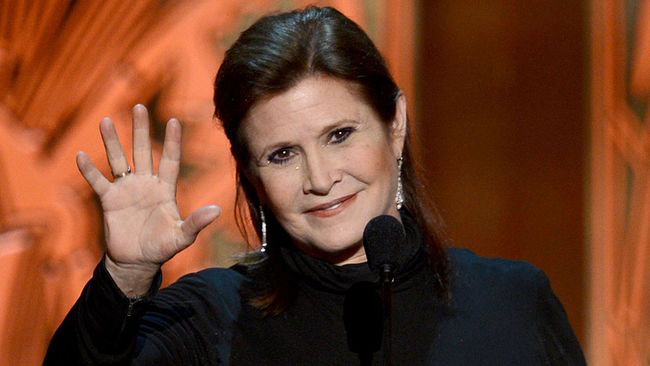Carrie Fisher, actress, performer, and writer, died on Dec. 27 of this past year from complications following a heart attack. She was 60 years old.
Fisher’s unique charm touched all aspects of her career. As a writer and performer, she spoke with candour and humour about the peculiarities of growing up within the film industry and getting caught up in what she called “Hollywood inbreeding.” Following in the footsteps of her parents, Debbie Reynolds and Eddie Fisher, she appeared in the entertainment world from an early age.
Fisher made her first professional appearance in the 1973 Broadway revival Irene, alongside her mother, Debbie Reynolds. In her role as Princess Leia in Star Wars (1977), Fisher brought a fierce presence and wry humour to the character and the sci-fi world.
Fisher wrote several memoirs about her life, including Postcards from the Edge (1987) and Wishful Drinking (2008), and was outspoken about her bipolar disorder and history with drug addiction. Her accounts of life on remote set locations for Star Wars and dancing with partner Paul Simon at Studio 54 illuminate her unique and exciting life in the context of her addictions. Fisher wrote—and lived—with determination and a pithy sense of humour. Bright Lights, an HBO documentary observing the relationship between Fisher and her mother was released Jan. 7. Reynolds passed away on Dec 28—one day after her daughter’s death—as a result of a stroke. She was 84 years old.
“No matter how I go, I want it reported that I drowned in moonlight, strangled by my own bra,” Fisher wrote in Wishful Drinking. In those words, and in all her work, Fisher created an inimitable legacy. A private ceremony for Fisher was held on Jan. 7, and Fisher’s ashes were placed in an antique urn in the shape of a giant Prozac pill.
A previous version of this article stated that Star Wars was released in 1979. Star Wars: Episode IV – A New Hope, the first film in the franchise, was released in 1977.









